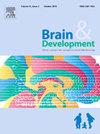Spinal Tuina ameliorates cerebral palsy-associated neural impairment in hypoxia-ischemia model rats via BMSC-derived exosomal microRNAs
IF 1.3
4区 医学
Q4 CLINICAL NEUROLOGY
引用次数: 0
Abstract
Background
Spinal Tuina is effective for cerebral palsy (CP), but its molecular mechanism remains unclear. Prior studies indicate that acupoint stimulation regulates miRNAs in bone marrow mesenchymal stem cell-derived exosomes (BMSCs-Exo) to promote brain repair. This study explores whether Spinal Tuina treats CP via a similar mechanism.
Methods
A neonatal hypoxic-ischemic (HI) model was established in 3-day-old Sprague-Dawley rats via left common carotid artery ligation and hypoxia, followed by standardized Tuina. BMSCs were extracted via adherence separation, and exosomes were isolated by ultracentrifugation. Tuina's effects on BMSC proliferation (colony formation assay) and exosome release nanoparticle tracking analysis, were assessed. High-throughput miRNA sequencing, qRT-PCR, and bioinformatics identified differentially expressed miRNAs and their regulatory pathways.
Results
HI + Tuina rats showed improved affected-limb motor function. BMSCs from the HI + Tuina group exhibited elevated fibroblast colony-forming units and exosome concentrations compared to HI Untreated and Sham groups. Among differentially expressed miRNAs in BMSCs-Exo, 14 were upregulated in HI + Tuina vs. HI Untreated, with mir-150-5p highlighted as a key regulator. Kyoto encyclopedia of genes and genomes analysis revealed target gene enrichment in mitogen-activated protein kinase (MAPK), tumor necrosis factor (TNF), axon guidance, and Hippo signaling pathways.
Conclusion
Spinal Tuina improves motor function in HI rats, enhances BMSC proliferation and exosome release, and regulates exosomal miRNAs. MiR-150-5p is a critical mediator, with differentially expressed miRNAs potentially modulating inflammation, neurodevelopment, and cell survival in HI-induced CP.
脊髓推拿通过骨髓间充质干细胞来源的外泌体microRNAs改善缺氧缺血模型大鼠脑瘫相关的神经损伤
脊柱推拿对脑瘫(CP)有效,但其分子机制尚不清楚。先前的研究表明,穴位刺激调节骨髓间充质干细胞衍生外泌体(BMSCs-Exo)中的mirna,促进脑修复。本研究探讨脊椎推拿是否通过类似的机制治疗CP。方法采用左颈总动脉结扎和缺氧法建立3日龄sd大鼠新生儿缺氧缺血性(HI)模型,并进行规范化推拿。用贴壁分离法提取骨髓间充质干细胞,用超离心法分离外泌体。评估推拿对BMSC增殖(集落形成试验)和外泌体释放纳米颗粒跟踪分析的影响。高通量miRNA测序、qRT-PCR和生物信息学鉴定了差异表达的miRNA及其调控途径。结果shi +推拿大鼠患肢运动功能明显改善。与HI未治疗组和Sham组相比,HI +推拿组的骨髓间充质干细胞显示出更高的成纤维细胞集落形成单位和外泌体浓度。在BMSCs-Exo中差异表达的mirna中,HI +推拿组与HI未治疗组相比,有14个mirna上调,其中mir-150-5p被强调为关键调节因子。京都基因和基因组百科分析显示,靶基因在丝裂原活化蛋白激酶(MAPK)、肿瘤坏死因子(TNF)、轴突引导和Hippo信号通路中富集。结论脊柱推拿可改善HI大鼠运动功能,促进BMSC增殖和外泌体释放,调节外泌体mirna。MiR-150-5p是一种关键的介质,在hi诱导的CP中,差异表达的mirna可能调节炎症、神经发育和细胞存活。
本文章由计算机程序翻译,如有差异,请以英文原文为准。
求助全文
约1分钟内获得全文
求助全文
来源期刊

Brain & Development
医学-临床神经学
CiteScore
3.60
自引率
0.00%
发文量
153
审稿时长
50 days
期刊介绍:
Brain and Development (ISSN 0387-7604) is the Official Journal of the Japanese Society of Child Neurology, and is aimed to promote clinical child neurology and developmental neuroscience.
The journal is devoted to publishing Review Articles, Full Length Original Papers, Case Reports and Letters to the Editor in the field of Child Neurology and related sciences. Proceedings of meetings, and professional announcements will be published at the Editor''s discretion. Letters concerning articles published in Brain and Development and other relevant issues are also welcome.
 求助内容:
求助内容: 应助结果提醒方式:
应助结果提醒方式:


